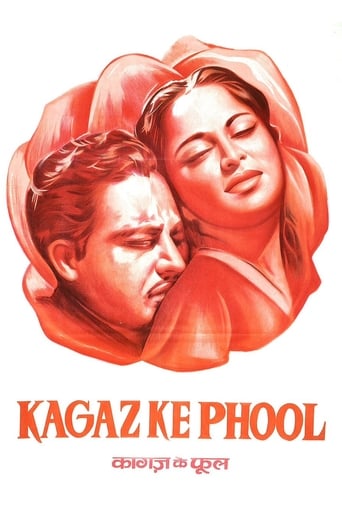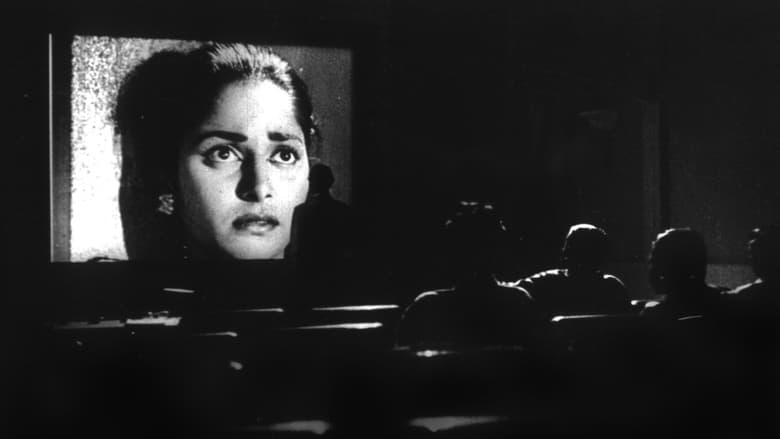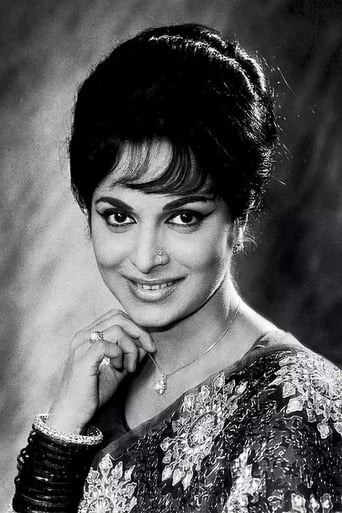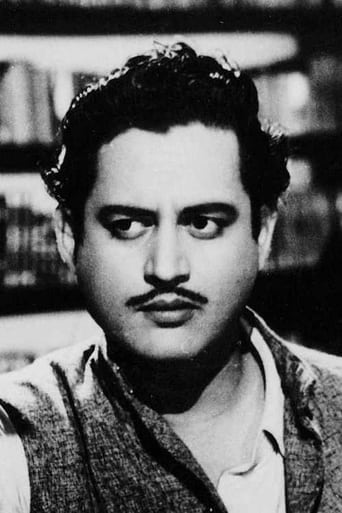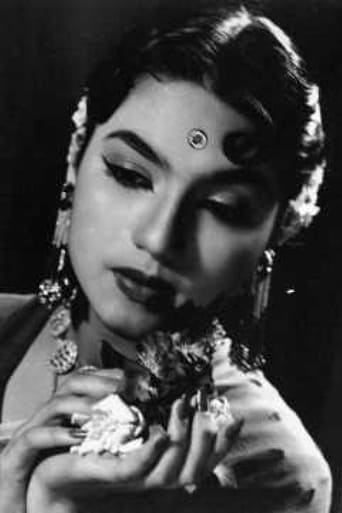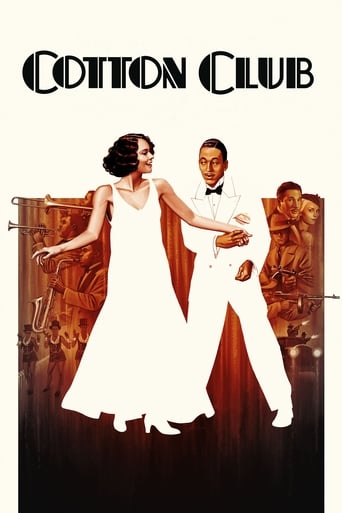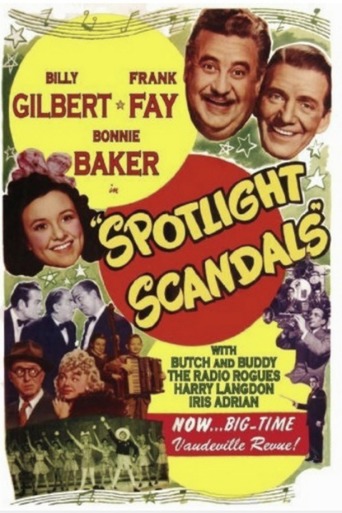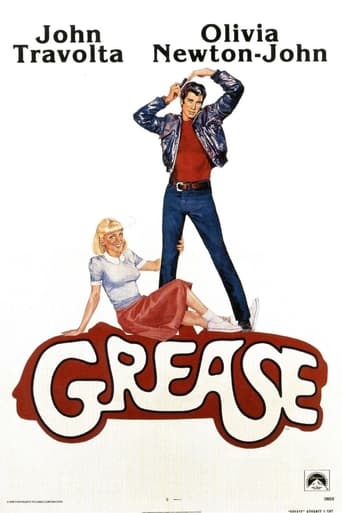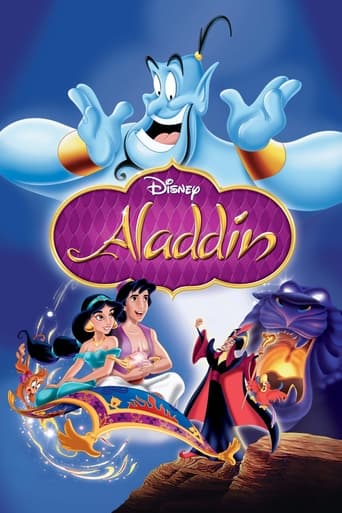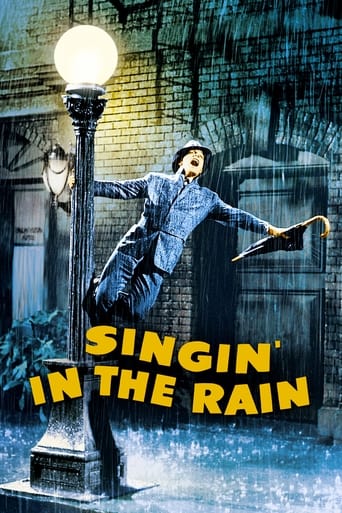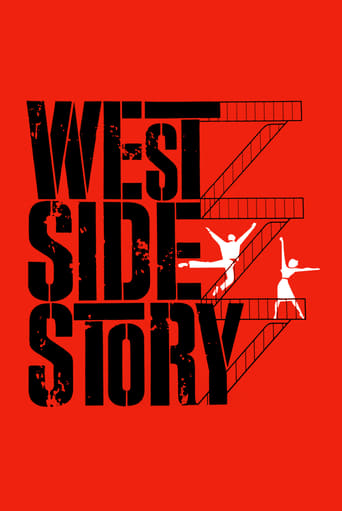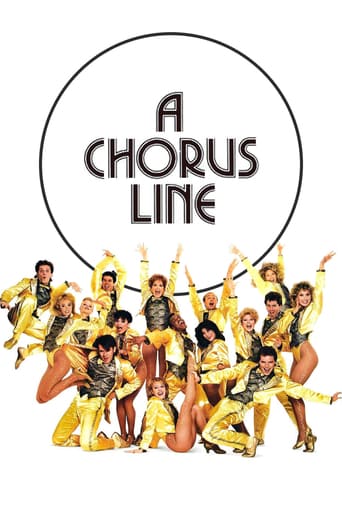Kaagaz Ke Phool (1959)
The film tells, in flashback, the story of Suresh Sinha, a famous film director and his relationship with an aspiring actress.
Watch Trailer
Cast


Similar titles
Reviews
Why so much hype?
Pretty Good
Best movie of this year hands down!
By the time the dramatic fireworks start popping off, each one feels earned.
Kaghaz ke phool ~ Dutt's Paper FLowers Is Pure Gold ... Guru Dutt, the troubled genius who committed suicide in 1964 at the age of 39 is a legend in India but little known outside of the subcontinent. In several other films films Dutt as actor/director played a semi-loser from the wrong side of the tracks who finally wins out against all odds to get the hand of a beautiful woman, but In "KAGAZ KE PHOOL" ("Paper Flowers") , now generally regarded as Dutt's masterpiece, he plays the role of a gigantic loser, a famous film director --something like a Bombay Cecil B. DeMille -- who junks his career and loses the great love of his life due to his own self-destructive tendencies, falling all the way to the bottom in a morbid tale with many echoes of Orson Welles' "Citizen Kane". The parallels with Kane" are more in the feeling, the overarching tragedy of the film told in flashback, and in certain visuals (eg. Shafts of heavenly light falling upon figures in a darkened room) than the actual story line, but also in Dutt's restrained flamboyance and versatility as an actor. Just as nobody but Welles could have been Kane, nobody but Dutt could have been "Suresh Sinha" the star director of Paper Flowers. In the film within the film Sinha is directing the famous Indian tragedy "Devdas", itself the story of a precipitous alcoholic fall from grace by a self-destructive lover. Everything is set when the actress for the key role of the heroine "Paro" drops out. In a driving rainstorm at a bus stop Suresh offers his coat to a drenched young lady (Waheeda Rehman) who turns up a few days later on the set to return the coat and inadvertently walks across the set while shooting is in progress. Viewing the rushes of this accidental exposure Suresh has an epiphany and realizes that he has found his Paro. He has also found a fantastic beauty who will soon outshine him with her own light -- exactly what happened in real life when the actress Waheeda Rehman, discovered by Dutt, went on to become a superstar as Dutt's own career plummeted in the wake of their shattered love affair. Much of what was actually going on in Dutt's private life is woven into the fabric of the film as it practically prophecies his own doom five years later. Dutt was evidently a driven and bedeviled man when Paper Flowers was being made and his personal pain pervades the picture, which was a great box office flop when it came out despite its compelling star power. (Note: Kane was also not a hit when it came out, although it is now regularly cited as "The greatest motion picture ever made"). The commercial failure of the film so discouraged Dutt that he stopped directing although he continued to appear as an actor in other films, notably "Sahib, Bibi, aur Gulam" (Master, Wife, and Slave), which was a big hit and won all kinds of awards in1963 including a Best Actor nomination for Dutt himself in the role of the servant in love with his master's wife.As for "Paper Flowers" which has finally found its place in the pantheon of great Indian films, Philip Lutgendorf, of the University of Iowa sums it all up in his extensive review as follows: "Flaws and all, KAAGAZ KE PHOOL deserves to rank-with Fellini's '8 and a Half'. among the all-time great films about filmmaking and life".
Dutt's 'Kaagaz Ke Phool' (Paper Flower) very much reflects his own life story. It can be described as poetry on canvas as it's beautiful, lyrical, agonizing, heartbreaking and a treat to watch. The legendary Guru Dutt pretty much lived the life of the famous painters whose works gained appreciation only after their tragic departure. Dutt's other masterpiece, 'Pyaasa' parallels this. Sadly, 'Kaagaz Ke Phool' was a commercial failure after its release. Ironically this is also shown in the film as Sinha's last film is a commercial disaster. Both 'Pyaasa' and 'Kaagaz Ke Phool' somewhat parallel this genius's life.The cinematography has always been a highlight of Dutt's films. The use of lighting is very good as it emphasizes the somberness. The light beaming on the screen during the premier of Sinha's 'Devdas' and the spotlight on the main characters during the interval song are examples of the skillful use of light. The overlapping images, the close-ups, and the long-shots all work effectively.Among the songs, it is the unforgettable 'Waqt Ne Kiya', sung by the late Geeta Dutt, that stands out. It's both shot beautifully and the lyrics are magic as it expresses the silent emotions conveyed between the two protagonists. 'Dekhi Zamaane Ki Yaari' is also a good track. The rest of the songs range from okay to adequate. The Johnny Lever track could have easily been left out. The character itself was not really necessary.The relationship between Sinha and his estranged wife seems a little hazy. Perhaps it was a good idea not too put too much focus on them as the film was mainly about Suresh and Shanti's relationship. The characters of Mrs. Sinha and her parents are very caricaturish.The chemistry between the enigmatic Guru Dutt and the luminous Waheeda Rehman is electric. They convey so much without saying anything. As Sinha says, 'We have always understood each other'.While 'Kaagaz Ke Phool' has its flaws (which I think are very few), it is essentially a beautiful powerful classic. The storytelling is simple without being too emotionally manipulative or preachy. 'Kaagaz Ke Phool' is a gift to cinema.
Kaagaz ke Phool (KKP), along with Gurudutt's other film Pyaasa, stands for the film maker Gurudutt. It is more of a painting or a poetry in motion. These are films where story is the main actor each and every detail of which is done up to a fine precision. This film is now regarded by many as a classic and I wonder if it was appreciated as much when the film was released. Surely this film is one dimension less compared to the infinite dimensional Pyaasa; and perhaps this is a reason for its commercial failure. On the other hand, Pyaasa has impressed so many that it was also remade in Telugu (a south Indian language) by name "Mallepoovu" starring Shobhanbabu and Lakshmi. In comparison, the failure of KKP made Gurudutt further direct such artistry later. Of course, a film maker should make films close to his heart than worrying its saleability; but at the same time an appreciation would make him doubly sure that there are people supporting him in his works. Thus I feel that appreciating a work of art much later is no less criminal compared to killing the art itself. Sometimes people escape by saying "it was ahead of its times". My sincere request to anyone reading this review, is to appreciate things at the right time.KKP is a film where director plays the main role; i mean the main character in the film is a director. It is easy now to guess that the story revolves around film industry. The story is set in the period where anything in the film industry was considered a taboo; particularly in 'high society' people. The director in those days is the final authority with respect to the choice of location, story and the crew (acting and technical) and the producer is limited to money matters. Our director in the film, Suresh Sinha is one such. He made lot of successful films that earned lots of money for the production company.Suresh is now making a film Devdas and is looking for an actor for the role Paro. On one fateful rainy evening, he meets Shanti, an young girl shivering with cold. Suresh gives his warm coat to her and he leaves in hurry to Bombay. Shanti comes to Bombay to return his coat and is also searching for a job. He offers the Paro role to her and both get on well and they understand each other. They admire each other. Suresh is married and his wife stays away from him since he is a filmy person; also he is not allowed to meet his daughter, Pammi, who is in a boarding school at Dehradun. Once Suresh is hurt badly in an accident, on listening to this the reaction of his wife is "if he needs me,then send him to Delhi (from Bombay, where the Hindi film industry is based)" and this best describes their relation. Suresh sees her daughter in the doll belonging to her. Pammi's friends in school tells her that his father is involved with an actress (I wonder how small girls are even allowed to read such film magazines in those times! perhaps in boarding schools it is possible? keep my fingers crossed!). Then this small girl Pammi runs from the school and reaches Bombay. She meets Shanti and takes a promise from her that Shanti would leave all her work in Bombay and go away from Suresh's life. Shanti leaves Bombay, leaving behind her memories in a sweater that she made for Suresh.With a suffering heart like the river longing for the fish that has been separated from it, Suresh has become a dried ocean. people refuse to give him any work and some of them say "you are not fit for direction!" Suresh loses all his wealth in next two years and his house auctioned and he leaves his house with two cherished things that he would not lose till he lost his life: the doll and the sweater.The fate again brings Shanti to work, having lost the court case with the production company. She agrees to work provided Suresh is back as director. She meets Suresh and he tells her "I lost everything and I sold everything but not self-respect" and thus denying her proposal. But she bound by her contract continues. What happens later, should be seen oneself. I promise you that it is worth watching it.The film is nicely supported by its music, the song "Dekhi zamaane kiyaari" captures the theme of the film and "Waqt ne kiya kya haseensitam" captures the relation of Shanti and Suresh. Its photography is well-talked about and VK Murthy is responsible for it. If you are interested in knowing more about Gurudutt's works and this film in particular, then I have two suggestions. Get yourself a copy of any of Gurudutts films released by Yashraj Films. This DVD comes with a documentary taken by Nasreen Munni Kabir that was shot for a TV channel earlier. Otherwise, one could read a book written by Nasreen Munni Kabir (apparently,it is based on the work she did for the documentary) entitled "Gurudtutt: A life in cinema" published by Oxford press.Finally an interpretation of the title Kaagaz ke phool (exact translation means "Paper flowers". Bees are looking for honey and hunt for flowers. The song "Dekhi zamaane ki yaari" says "Oh thirsty bees, fly away from here these are all Paper flowers (naturally they don't have what the bees are searching for!)". I interpret it as saying/requesting/asking the people not to look for wealth/success (in the popular meaning) and do not expect anything from this society in return of what you are doing. Do your job, simply!
I'm still slowly developing my appreciation for "Bollywood" although this film certainly does not fit the prototype for what I've seen and expected thusfar. Instead of sassiness and splash, this epic traverses seriousness and shadow.I'm certainly glad that I saw it, but truth be told I'm happier having seen it, than I was while actually watching it. By renting the DVD, I was able to watch a 3-part special on Guru Dutt that I highly recommend. His colleagues still speak so fondly and insightfully of him, very touching. It might be worth watching that special before the main feature. The film is from 1959 and thus has elements that are timeless, yet also elements that are quite dated.First off, it is in black and white, and several scenes (not only those involving knitting) screamed for color, but alas what can you do? Is there a Ted Turner in India?? Kidding!! The camera work and shots however are often remarkable, shadows just don't look as stark in color. On the extras, V.K. Murthy discussed the light beams and lenses he created for Dutt. Speaking of Murthy, he was so very compelling on the DVD extras...why does IMDB list him working so rarely? I suspect it is just an incomplete filmography??Dutt and he also used overlapping images that I still enjoy, but I don't think anyone uses these now since they were probably overused at one point in the 60's. Bring 'em back, the sliding limelights and later sliding martinis worked very well. There's a great scene of a throng of adoring film fans where the camera takes on a boat-like rocking that caught my eye. The camera often moves, and shots usually are not interrupted with so many alternative angles as we are used to today. Personally that's one of my favorite aspects of older films, the lingering shot.There was a pivotal scene where I guess they needed two different takes, spliced from nearly the same location after the "sofa" reunion of our two starcrossed lovers. It may be footage was just lost there (other moments during songs for example it was clear this has happened). The sudden change in that scene almost right at that abrupt camera perspective change in the takes used, didn't translate to me in the US in 2004. But I'm usually one to encourage lovers to "requit," damn it!Another significant problem comes with what we an audience, and Dutt/Sinha as a character, allow his daughter to get away with. Again, I'm nothing more than an acolyte in appreciating these Indi films, but it seems a common theme is the man is with one woman, but in love with another. How to construct this barrier in a sassy film that will hypnotize with eye-popping dance scenes over ear-popular music is very different than how to construct a barrier in a serious film such as this.I don't really care in the first case, but here the impudence of the daughter just put me off, and made the unrequited love seem sort of senseless. One of Guru Dutt's contemporaries talked about how in real life, he could love...but not state his love. This is a more interesting divide, and it is presented somewhat here, generally with the enchanting Chanti saying "Listen..." (well that's what the subtitles said...) Three times at least... Winds also pick up at key moments.The film is well constructed with devices like that, and the aforementioned beams of light. The ingenue and the auteur love story works well, a Pygmalion with another pigment. Naivete and innocence are not only what draw Sinha to Chanti, but they are also what some people will like about this film quite a bit.For me, I might be a bit too jaded. The "Rocky" comedic relief (is his name really Johnny Walker...that's like a character out of "Alien Nation") while sorta funny in ways, at the same time got on my nerves a bit. Although for a moment I thought he was going to be well ahead of time and be a gay character on screen in the 50's. Indeed any scene involving any one from his family tended to bring the film down in a broad fashion. We get it, the aristocracy are horrible to the poor and lowly millionaire film mavericks, not willing to give them the compassion they shower upon their dogs. Another clue to dislike them, the fact that they use the English language.I still don't know why at one point the estranged Mrs. Sinha says "If he needs me, put him on the next flight." If she were too sickly to go to her husband in his need, or if a monsoon made it prohibitive to go to Bombay...that might have been better from my point of view.The fact that this is a film about the film industry may put some folks off, but like Altman's "The Player" this film I think benefits from such self-reflection. The notion of a director's struggle for art and control, when the bets are switching to the actors and actresses as workhorses evidently paralleled Dutt's own struggles. Ultimately I think Dutt's own life is more interesting than the role he created and portrayed here. It seems in the artificial cinema sunlight, he felt rootless and never blossomed amidst all the paper flowers.Back at school, I saw some of Sergei Eisenstein's films as part of being a Rhetoric major, I wish we had seen and discussed this film. I'd be curious to know if others found some of the women when speaking looking awkwardly askance? In today's era of reality TV and hand-held documentary style film fiction, I sort of miss stylized movies as an art ...although I'm certainly glad car footage can be shot on real roads and not sound stages these days. ;>Overall I think "Kaagaz Ke Phool" has as much going for it as other film school classics (and being appreciated with a sense of history would help). Although even as a "stand-alone" film I found it entertaining. Not sure I would have said the same of "Battleship Potemkin" sitting at home on a Thursday night.7/10

